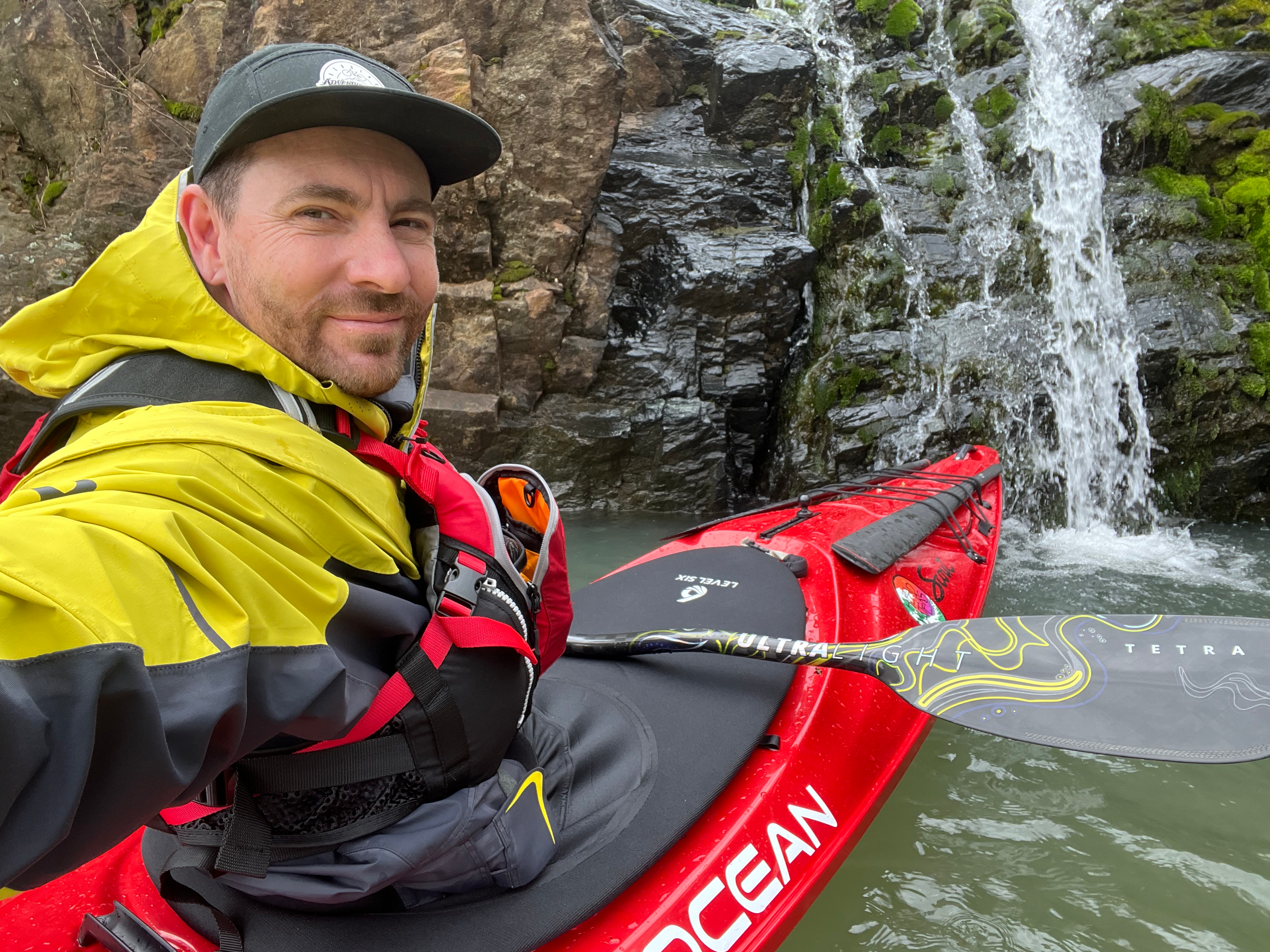Chasing Wind and Nostalgia at Gold Lake: A Tour in the 1993 Pachena
- Headwatersdan

- Aug 5
- 2 min read
Hey folks, Dan here.
I just got back from a little solo mission to a very cool alpine lakes in the Lost Sierras—Gold Lake. Tucked high up in the mountains, this place is a gem: clear water, rocky outcroppings, and that crisp mountain air that just makes you paddle slower and breathe deeper.
This time, I brought along my 1993 Current Designs Pachena—a used 14-foot touring kayak I just picked up on market place that I've been messing with lately. It’s short by touring standards but has a rudder and a sleek hull that still holds its own after 30+ years.

The Plan: Outsmarting the Wind
When I arrived, the wind was already up. Not enough to call it off—but enough to make you think up a plan of action. I decided on a counter-clockwise loop of the lake, using the points and shoreline as wind breaks on the way up. The goal was to get shelter going out, then ride the wind and surf little wind waves on the way back. It worked beautifully.
This trip was a reminder of just how important boat choice, route planning, and understanding wind dynamics are when you're on open water.

Why Touring Kayaks Still Rule
There’s a reason I keep coming back to boats like the Pachena. Modern rec kayaks are great in many ways—but when it comes to covering distance in wind and chop, a touring kayak with a skeg or rudder is worth its weight in gold.
Glide & Speed: Longer boats slice through water more efficiently. Every paddle stroke gets you farther with less effort.
Tracking: You stay on course in sidewinds or cross-chop without having to constantly correct.
Storage: Even for a day trip, it’s nice to have dry hatches for lunch, layers, and gear you might not need but are glad you brought.

Rudder vs. Skeg: Control Matters
The Pachena I paddled has a rudder, and I used it a ton on this trip—especially when the wind was quartering. A rudder helps maintain heading while paddling forward, which means your strokes stay powerful and efficient. You're not constantly correcting your line.
A skeg, on the other hand, is simpler and helps reduce weathercocking when the wind’s from the side or behind. Either way, having one or the other makes a huge difference in open water.
If you’re paddling on lakes, bays, or coastlines where wind is a factor, don’t underestimate the value of having directional control built into your boat.
Final Thoughts: Long, Lean, and Under Control
Paddling that old Pachena on Gold Lake reminded me why I fell in love with longer touring kayaks in the first place. They let you cover water efficiently, handle adverse conditions, and they still surf a breeze home like a dream. Especially if you plan your route smartly.
So if you're debating between a 10-footer and a 14+, and your paddling includes open water or afternoon winds, trust me: go longer. Bonus points if it has a skeg or rudder.
Until next time—stay curious, stay paddling.
– Dan Headwaters Kayak


Comments